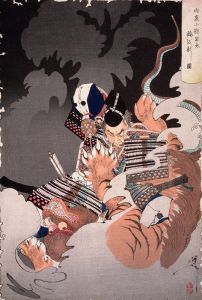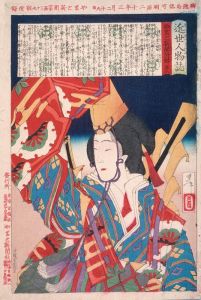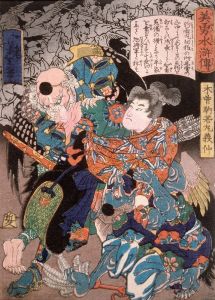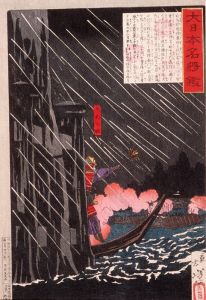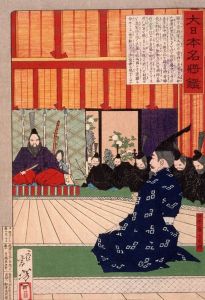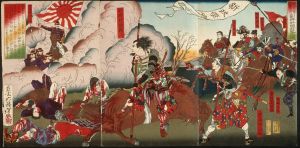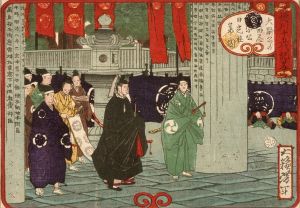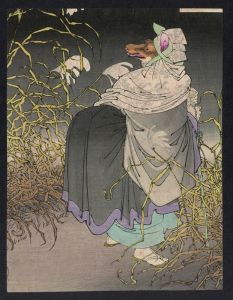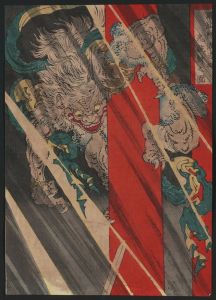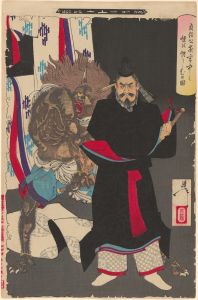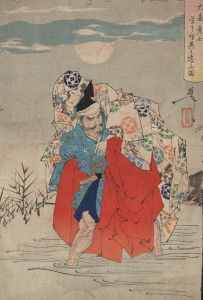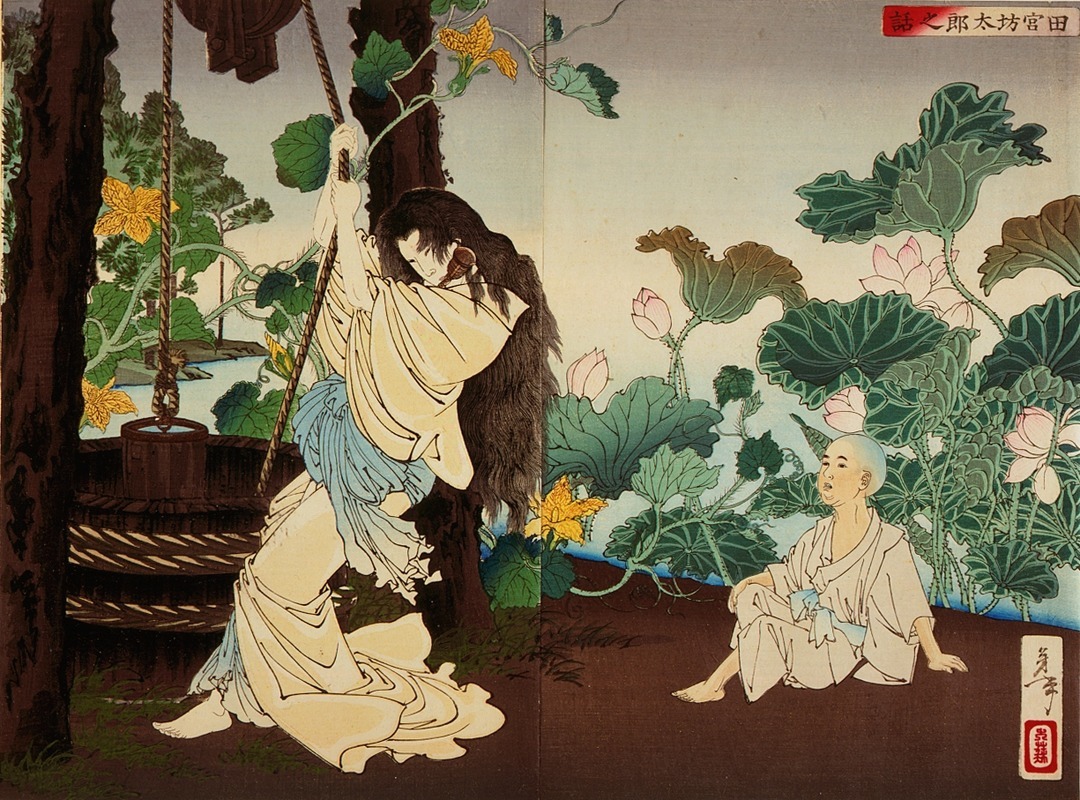
The Story of Tamiya Bōtarō
A hand-painted replica of Tsukioka Yoshitoshi’s masterpiece The Story of Tamiya Bōtarō, meticulously crafted by professional artists to capture the true essence of the original. Each piece is created with museum-quality canvas and rare mineral pigments, carefully painted by experienced artists with delicate brushstrokes and rich, layered colors to perfectly recreate the texture of the original artwork. Unlike machine-printed reproductions, this hand-painted version brings the painting to life, infused with the artist’s emotions and skill in every stroke. Whether for personal collection or home decoration, it instantly elevates the artistic atmosphere of any space.
"The Story of Tamiya Bōtarō" is a woodblock print by the renowned Japanese artist Tsukioka Yoshitoshi, who was active during the late Edo and early Meiji periods. Yoshitoshi is celebrated for his innovative approach to traditional ukiyo-e art, and his works often explore themes of history, folklore, and the supernatural. This particular print is part of Yoshitoshi's series "New Forms of Thirty-Six Ghosts" (Shinkei Sanjūrokkaisen), which was published between 1889 and 1892. The series is notable for its imaginative depictions of ghost stories and supernatural events from Japanese folklore and literature.
The print "The Story of Tamiya Bōtarō" illustrates a tale of revenge and the supernatural. Tamiya Bōtarō is a character from a popular kabuki play, which itself is based on a true story from the Edo period. The narrative revolves around themes of betrayal, vengeance, and justice, common motifs in Japanese storytelling. In the story, Bōtarō seeks to avenge the wrongful death of his father, Tamiya Iemon, who was murdered by a rival samurai. The tale unfolds with elements of the supernatural, as Bōtarō is guided by the spirit of his deceased father to exact revenge.
Yoshitoshi's depiction of this story captures the dramatic and eerie atmosphere associated with ghost tales. His use of vivid colors and dynamic composition enhances the emotional intensity of the scene. The print likely features Bōtarō in a moment of confrontation or realization, with visual cues that suggest the presence of the supernatural, such as spectral figures or ominous settings. Yoshitoshi's ability to convey complex narratives through his art is evident in this work, as he combines traditional ukiyo-e techniques with a modern sensibility that appeals to contemporary audiences.
Yoshitoshi's "New Forms of Thirty-Six Ghosts" series, including "The Story of Tamiya Bōtarō," reflects the artist's fascination with the macabre and the mystical. This series is considered one of his masterpieces, showcasing his skill in blending realism with fantasy. The prints were produced during a time of significant cultural change in Japan, as the country was opening up to Western influences while also experiencing a resurgence of interest in its own traditional arts and stories.
The enduring appeal of Yoshitoshi's work lies in his ability to capture the imagination of viewers, drawing them into a world where the boundaries between the living and the dead are blurred. His prints continue to be studied and admired for their artistic merit and their contribution to the preservation and reinterpretation of Japanese folklore. "The Story of Tamiya Bōtarō" remains a testament to Yoshitoshi's legacy as one of the last great masters of the ukiyo-e tradition, whose work bridges the gap between the past and the present.





